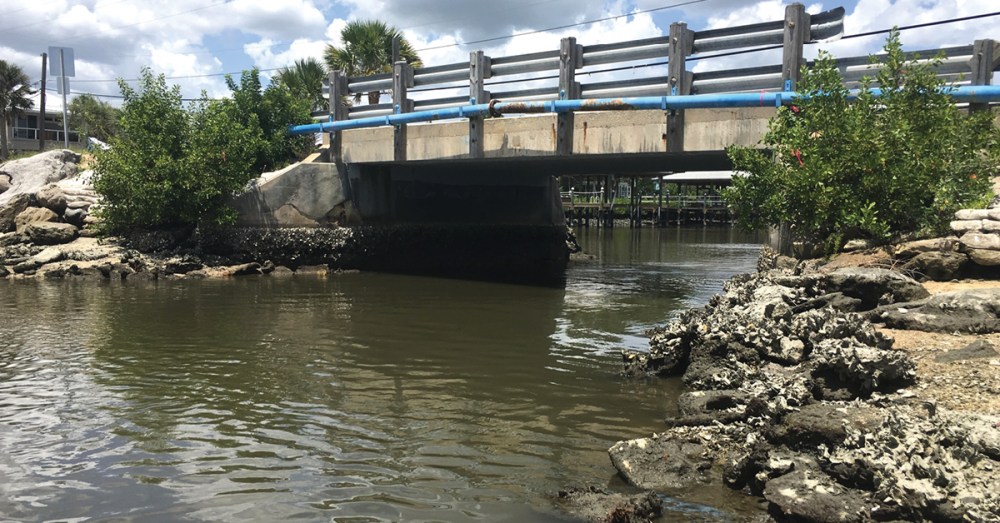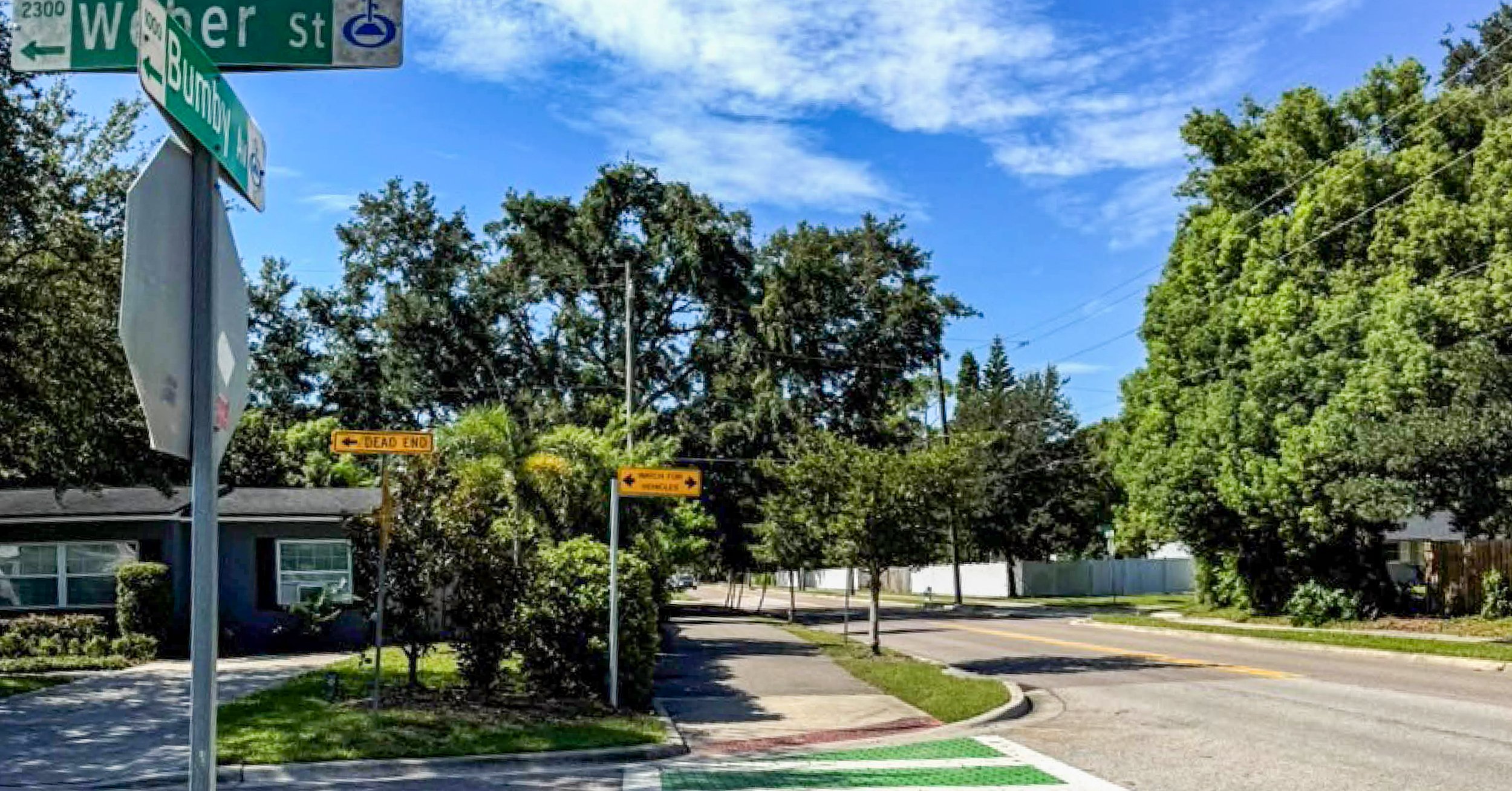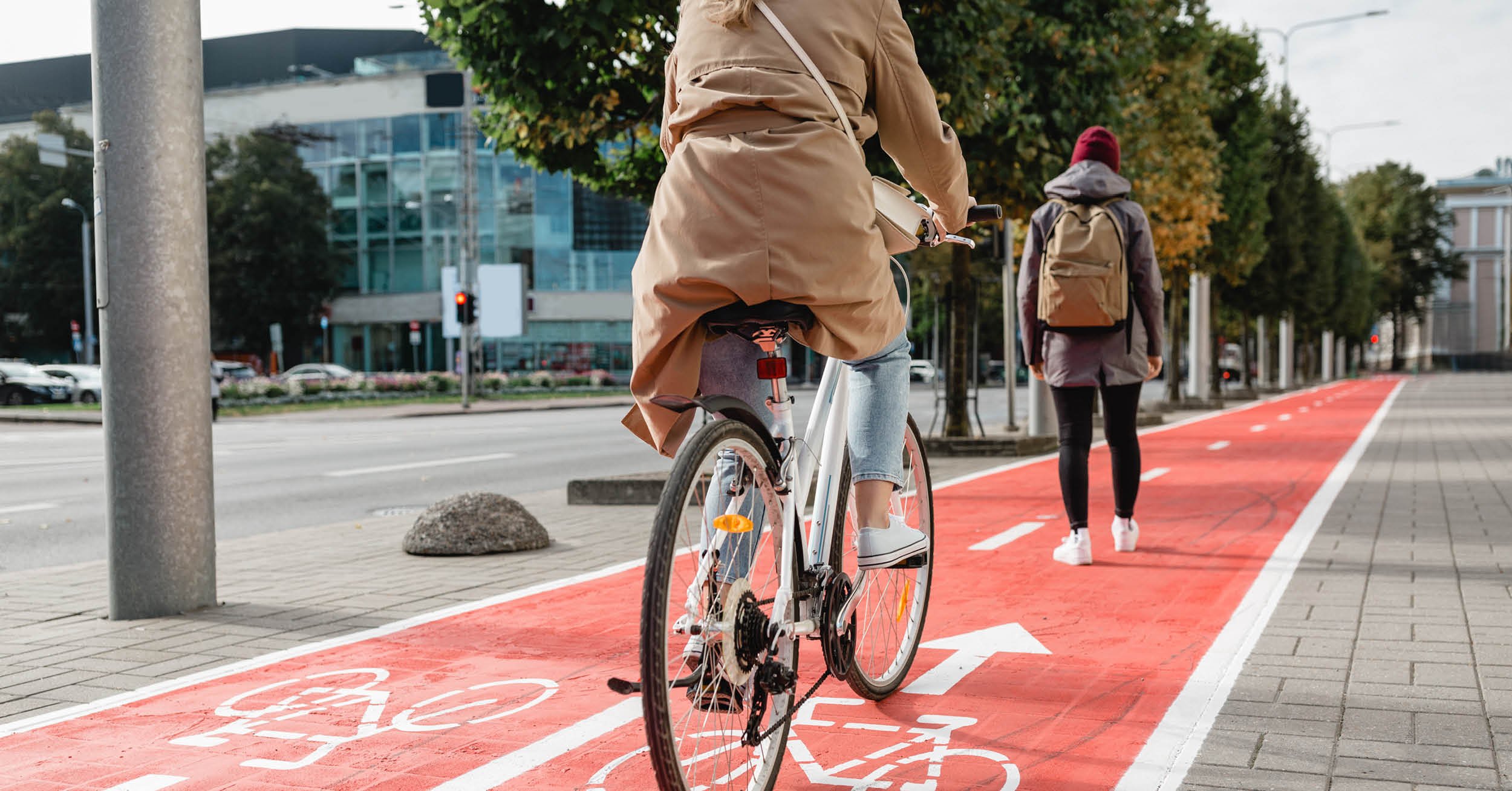Located within the scenic Yacht Club Cut in New Smyrna Beach, Fla., is an aging bridge that provides critical accessibility.
The 5th Street Bridge, with one travel lane in each direction to accommodate two-way traffic, serves as the sole vehicle route connecting Riverside Drive to a quaint island enclave that is home to the historic Smyrna Yacht Club and 24 waterfront residences along Commodore Drive.
Since its construction in 1965, this single-span bridge has served the community, but time has taken its toll on the structure. With the bridge’s deteriorating conditions and the need to improve access and safety, the City of New Smyrna Beach selected DRMP as the prime consultant to design a replacement bridge. The new bridge design not only addresses current infrastructure challenges but also enhances the surrounding environment.
As the project manager, I am excited to report the considerable progress of this project since it launched in 2018. Design of the project began in 2018 and was completed in 2023 with construction beginning in fall 2023. Last month, the contractor, P&S Paving, installed a temporary steel bridge to the south of the existing bridge to provide access while the new bridge is being built. Currently the existing bridge is being demolished, and the new bridge construction is underway.
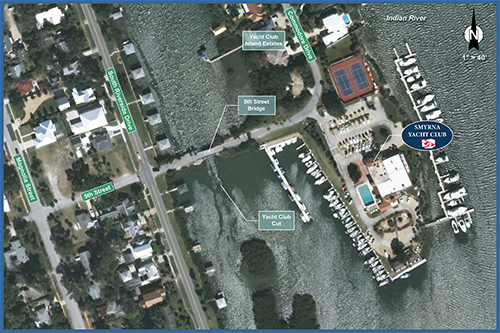
Safer Bridge with Environmental Benefits
The original bridge connecting to the yacht club is undergoing an upgrade with a new 160-foot, three-span bridge set to replace it. It will be constructed for a service life of 75 years. The more modern design provides two 9-foot-wide travel lanes and 2-foot-wide shoulders on the approaches on each side of the bridge and a 5-foot-wide sidewalk on the north side of the bridge, making it a safer structure than the original.
With delivery trucks making frequent trips to the yacht club, the new bridge design will allow for more room as cars travel side-by-side over the bridge. The addition of a sidewalk also makes it safer for pedestrians to cross the bridge.
One of the key benefits of this project is the incorporation of rubble riprap. This design involves the removal of several feet of existing embankment and the reconstruction of sloped abutments using rubble riprap.
By implementing sloped abutments at each end of the bridge, we aim to significantly mitigate the wash-out that occurred with the existing structure. The rubble riprap consists of large rocks, which will help reduce flow velocities within the channel at the end spans and protect the bridge long-term. Additionally, the reconstruction of both sides of the bridge approaches will not only ensure a smoother ride for commuters but also facilitate efficient water drainage further enhancing the bridge’s resilience.
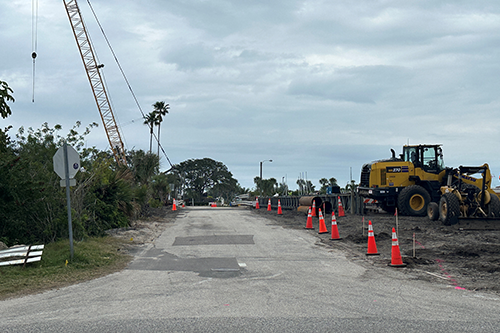
Our new bridge design also will widen the channel through Yacht Club Cut and promote additional water flow under the bridge, while restoring water flows back to what they were prior to the construction of the original bridge in 1965. It is the hope that improving the water flows will attract natural species back to the area. We are also going to be raising the bridge over the channel approximately 2 feet, so there will be more than a 5-foot vertical clearance on average above the top of the water.
As part of the project, our firm’s Environmental Services Group conducted an environmental review to determine necessary steps to avoid minimizing or mitigating environmental impacts. Our firm designed a living shoreline and relocated oyster beds and mangroves in the project area to approximately 3 acres of wetlands to mitigate impacts associated with the bridge replacement.
Project Preparation
The first two to three months of this project involved prepping the site for the construction of a temporary bridge, which involved driving piles in the channel. The temporary bridge, located south of the existing bridge, will be in place for about a year and will have a speed limit of approximately 15 mph. Although these temporary bridges are typically used on highways with speeds of up to 65 mph, due to the specific area, the speed limit going over Yacht Club Cut will be posted at 15 mph.

The existing bridge supports various utilities on both sides, such as water, sewer, and gas lines, with overhead electric and cable situated adjacent to the north side.
DRMP was tasked with replacing these utilities, including water mains, sewer mains, electric, and communication cables. Employing directional drilling techniques, our team designed the utility infrastructure to minimize disruption by avoiding the need to relocate utilities twice, ensuring continuous service during both temporary and permanent bridge construction.
Our team carefully coordinated the directional drills to steer clear of bridge piling and keep them outside the bridge footprint. Project permitting involved obtaining a Sovereign Submerged Land Lease. Our expertise allowed the client to successfully modernize the affected utilities and manage any construction-related utility challenges.
The replacement of the 5th Street Bridge improves accessibility, safety, and environmental sustainability for the New Smyrna Beach community. Through innovative design, careful planning, and coordination, this project not only addresses infrastructure challenges but also promotes resilience and environmental stewardship. As construction progresses, we look forward to witnessing the positive impacts of this transformative project.
Amanda Woods, PE, serves as Senior Vice President/Director of Transportation for DRMP’s Transportation Market Sector.


